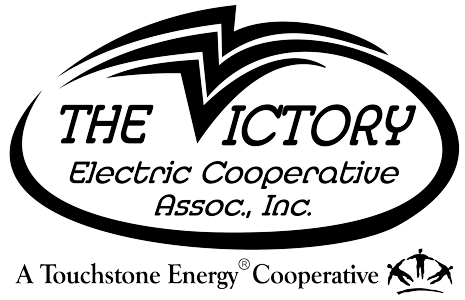If you are experiencing a power outage, please call our office at 620-227-2139 or 800-279-7915. Thank you!
Affordable Ways to Live More Sustainably
Looking to go green without spending a lot of green? These low-cost measures are your ticket to sustainability at a sustainable cost.
Affordable Ways to Live More Sustainably
Published:
Looking to go green without spending a lot of green? These low-cost measures are your ticket to sustainability at a sustainable cost.

Sustainable living is often seen as friendlier to the environment than your bank account. Some projects, such as adding solar panels, do take a lot of green. Sustainability, however, doesn't have to leave you drowning in red ink. These low-cost projects (each about $200 or less) will help you cut energy costs and reduce your impact on the environment without building up a pile of debt.
Plant some shade
Planting leafy trees around the south and east side of your home can help cut cooling costs while contributing to the fight against global warming. In summer, the leaves provide cooling shade. In winter, the bare trees allow the warming sun to shine through, saving on heating costs. Trees also gobble up carbon dioxide.
Select fast-growing trees, such as maples, burr oaks and river birches. You can generally plant shade trees for less than $200, although costs vary depending on tree size and type. See energy efficient landscaping from the U.S. Department of Energy for more information.
Start a compost bin
You may think of composting as dirty and smelly, but it creates a rich soil additive that can improve your lawn and garden while reducing the need for chemical fertilizers. Good stuff to compost includes grass clippings, wood chips, leaves, house plants, fruits and vegetables.
You can purchase a compost bin for as little as $50, although larger bins with extra features will cost more. Or, build your own; all you need is lumber, hardware and a little time. See Composting at Home from the U.S. Environmental Protection Agency (EPA) for more information.
Set up a rain barrel
 Lawn and garden watering make up nearly 40% of total household water use during the summer. A rain barrel collects water and stores it, providing a supply of soft water free of chlorine, lime or calcium.
Lawn and garden watering make up nearly 40% of total household water use during the summer. A rain barrel collects water and stores it, providing a supply of soft water free of chlorine, lime or calcium. A rain barrel can save you up to 1,300 gallons of water during the summer, according to the EPA. Rain barrels also divert water from storm drains, which decreases the impact of runoff to streams. Rain barrels typically cost between $100 and $200, although decorative models may cost more.
Hang a clothesline
Clothes dryers use a lot of energy, costing as much as $100 a year or more. Why not air-dry your clothes for free? Clotheslines use no energy and fresh air is easier on your clothing than the intense heat of the dryer.
Clotheslines are simple to make; just attach a line between two stationary objects. Clothesline kits are available for purchase. Retractable sets, which can be moved out of the way when not in use, are also available. The cost is typically less than $50.
You're off to a good start, but don't stop now. Remember to reduce, reuse and recycle. Install low-flow showerheads and faucet aerators to conserve water and save energy. By taking these actions, you'll be well on your way to a more sustainable lifestyle at a sustainable cost.
